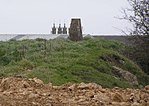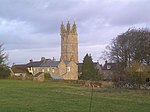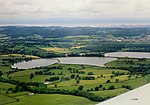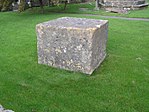Winford

Winford is a village and civil parish within the Chew Valley, Somerset, England. It is within the unitary authority of North Somerset about 8 miles (12.9 km) south of Bristol. The parish has a population of 2,153.The parish includes the village of Felton which is close to the A38, Bristol International Airport and Hartcliff Rocks Quarry and Lulsgate Quarry Sites of Special Scientific Interest. On Felton Common, between the village and the airport, is the church of St Katharine and the Noble Army of Martyrs, which was built around 1868, and the remains of a windmill which has been converted into a private house. The small village of Regil also falls within the parish, although it has its own small church dedicated to St James, one pub, a village hall and several farms. Winford village lies on the route of the Monarch's Way long-distance footpath and has one pub, a village post office and several farms in the surrounding area.
Excerpt from the Wikipedia article Winford (License: CC BY-SA 3.0, Authors, Images).Winford
Church Road, Bristol
Geographical coordinates (GPS) Address Nearby Places Show on map
Geographical coordinates (GPS)
| Latitude | Longitude |
|---|---|
| N 51.383 ° | E -2.6603 ° |
Address
Church Road 11
BS40 8EN Bristol
England, United Kingdom
Open on Google Maps










